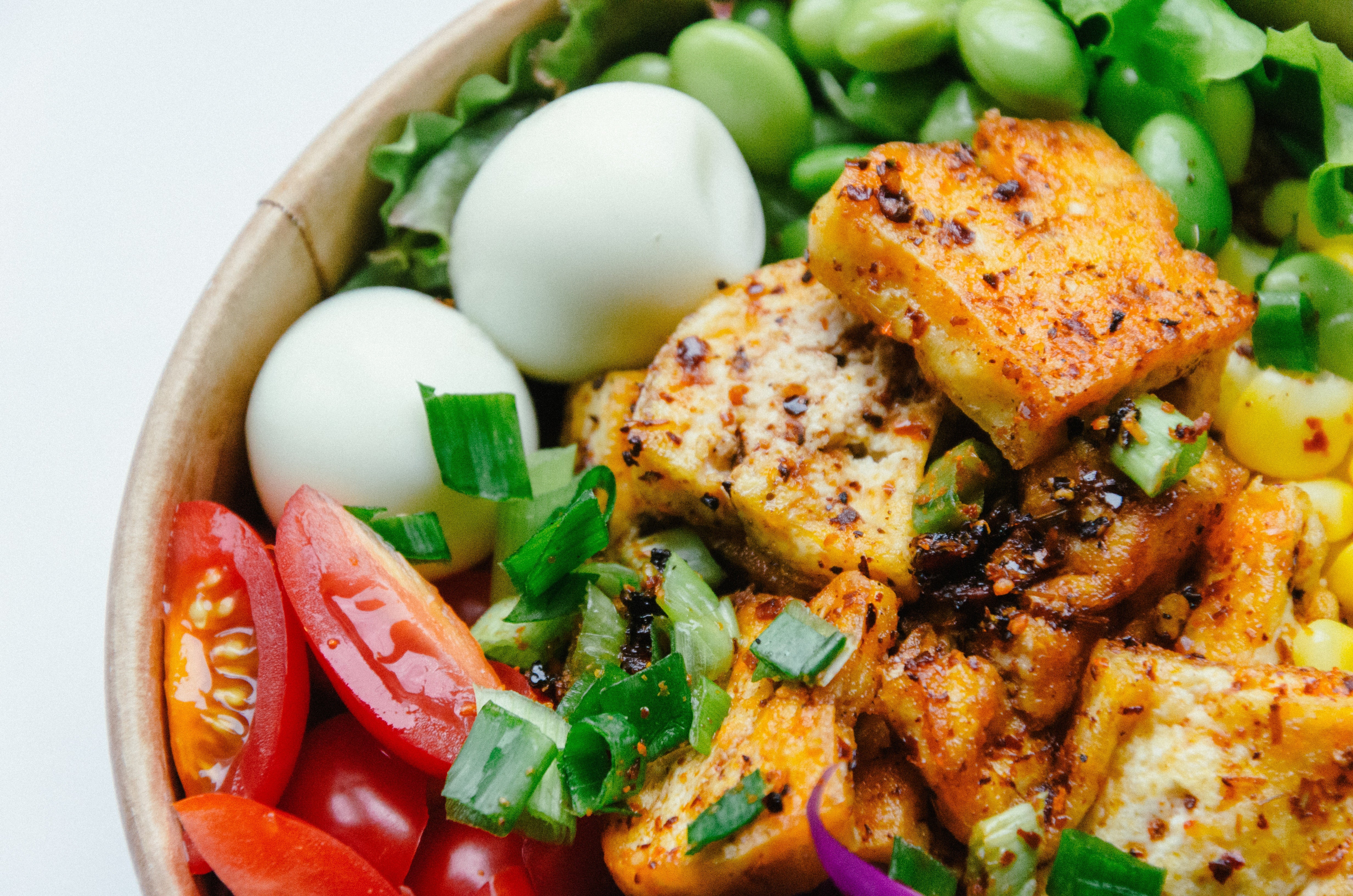Signs You Might Want To Up Your Protein

Protein is everywhere. It’s in shakes, powders, bars and even advertised in nut butters and cheese puffs. Here’s how to know if you’re getting enough protein.
Honestly, the average, healthy person probably does not need to worry about their intake. Trendy diets that emphasize low-carb eating and over-emphasize protein sources might be leading people to over-eat protein. In fact, most Americans consume around 100 grams of protein each day through a normal diet, roughly twice the recommended amount for many people.
But, that target might shift if you have endurance and performance-related goals. Using the updated protein recommendations for endurance athletes, on average, we require 1.5-2 times the amount of protein than the average person. But don’t go running for protein bars just yet! There are a few things to keep in mind when considering protein intake.
Protein and the Endurance Athlete
Protein is best known for its ability to repair and build muscles. With all the pounding runners do on a daily basis, sufficient protein intake is necessary to prevent injury and support our bones and joints.
And, it’s important for brain health too! Protein also plays a role in neurotransmitter production in our bodies. Neurotransmitters help with cognitive health and keep and the mood stable. That’s important for navigating tough, technical trails and keeping your friends and significant others happy!
And how about staying cold and flu-free during hard training? Protein can help build antibodies to help fight off infections and strengthen the immune system
How much protein do I need?
How much you need depends on body weight, but the International Society of Sports Nutrition (ISSN) recommendation is 1.4-2.0g/kg of body weight. For a 150-lb runner, this would equate to about 95-136 grams per day.
When should I eat protein?
Studies show protein intake promotes the highest rates of muscle repair and growth at intakes of 20-40g every two-three hours. Eating more protein than this does not mean that it will not be absorbed and used. Protein absorption and muscle protein synthesis are different processes. Protein is used for more than just building muscle, so don’t bet on that shake going straight to your ‘ceps. Spread out your protein intake throughout the day for the best absorption, taking in 20-30 grams at meals (like a chicken breast – 25g) and 15-20 grams at snacks (a Greek yogurt-14g).
RELATED: Why Fueling With Real Food Matters
Is all protein created equal?
Protein quality can be measured by an accepted scale called the Digestible Indispensable Amino Acid Score (DIAAS) and is based on the absorption of the amino acids in the small intestine. Going back to Biology 101, proteins are comprised of amino acids, which are used as building blocks in our bodies. Some proteins can be made by our bodies and are considered non-essential, while others can not and are considered essential. A protein is considered complete if it contains all of the amino acids in ratios that our body prefers. Most animal-based proteins are considered complete, while the plant-based proteins are incomplete. The highest proteins on the DIAAS scale are milk and animal proteins followed by soy and pea proteins from the plant family.
Vegetarians and Vegans:
There used to be an idea that since some plant proteins are low in or missing certain amino acids, vegetarians and vegans had to eat separate foods containing all the amino acids in the same meal to make a complete protein. That’s not true, because our bodies are smart enough to put the amino acids together throughout the day, as long as they are actually eaten. Not every protein you eat needs to be complete, but if you vary your protein sources (nuts, seeds, tempeh quinoa, for example) the more likely you are to be getting all the amino acids you need. Make sure you’re eating enough of those foods as well since volume needs tend to be higher in plant-based athletes.
RELATED: Small Exercises, Big Gains
Tips to fit more protein into your day
#1) Imagine your meals and snacks throughout the day as buckets. Make it a goal to divide up and fill the buckets with equal amounts of protein, so that you’re distributing and varying your protein sources.
#2) Focus on varied protein sources, especially if you are plant-based (beans and nuts, tofu and quinoa, chickpeas and grains)
#3) Snack right! Include protein-rich options into your snacks like nut butters, seeds, yogurts, and cheeses. Or make things like your own protein bars or energy bites!
#4) Use a protein powder (if necessary). Yes, you can get all of your protein from food sources, but protein powders can be convenient and useful if you are short on time. Try adding a dash of protein powder to soups and stews as well as smoothies.
Banana Coconut Protein Bars:
Servings: 12
Ingredients:
- 1Banana (mashed)
- 1 1/4 cups Oats
- 2/3 cup Unsweetened Coconut Flakes
- 1/3 cup Honey
- 1/3 cup Almond Butter
- 1 tsp Cinnamon
- 1/3 cup Protein Powder
Directions:
- Preheat oven to 350ºF (177ºC)
- Place all ingredients together in a bowl and mix well with a spatula.
- Pack mixture down firmly into a 9×9 square pan.
- Bake in the oven for 15 minutes. Remove and let cool for 30 minutes.
- When cool, cut into bars. Store in an air-tight container or wrap individually and throw them in the freezer for an easy grab-and-go snack.
Do you have a question for our RDN? Send your trail-running-nutrition quandaries to kylee@flynutrition.org.
Kylee Van Horn is a licensed Sports Registered Dietitian and competitive trail runner.